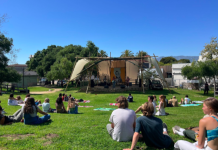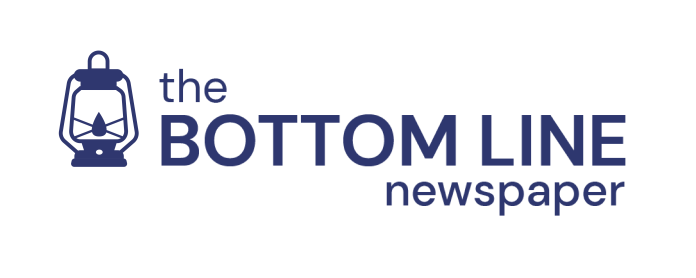Natalie Aymond & Hannah Adams
Opinions Editor & Co-Content Executive Editor
Two weeks ago, Santa Barbara News-Press sent out a notice that they will end direct newspaper delivery. Prior to this development, the Santa Barbara news source delivered print issues to their subscribers every morning, the last traditional daily newspaper in Santa Barbara. The News-Press will now distribute its papers through third-party delivery companies such as USPS.
In this flier notice, the paper credited this delivery change to current economic challenges, saying, “Unfortunately labor shortages, higher gas prices, and other current economic challenges have necessitated this change.”
With fewer resources to deliver print newspapers, we have to ask whether these stressors could incite a full online transition, from stress on funds from paying third-party delivery services and inflation of delivery and printing prices — especially with a suspected looming recession.
Looking at trends of newspapers transitioning to a more dominant online presence while not always contingent on economic standing, this is by far not the first case of this. The Columbus Dispatch was the first newspaper to break ground on online news, transitioning in 1980, with other big-name papers like The Washington Post and The New York Times following close behind. Now, we just think of these popular papers as dual mediums of news: online and print. But, even former New York Times CEO Mark Thompson has said he will be surprised if printing survives until 2040.
On a smaller scale, take UC Santa Barbara’s The Bottom Line Newspaper (TBL) as a first-hand example. From being a weekly print publication, last spring quarter, the newspaper transitioned to printing a special edition twice a quarter due to excess papers after distribution, strict copy deadlines, and upkeep with printing prices. This year, TBL plans to put more focus and resources into online content and expand its presence on social media platforms, like Instagram and Tiktok. However, even the special editions only cover a fraction of the output of news that goes online.
Aside from a physical transition of mediums, this national trend reflects the transitioning values and cultures in our increasingly technology-motivated society, especially the ideas of impatience and reliance on convenience. What does this say about the prominence of online media in relaying information to the public? We are now less news-motivated beings who have become compliant with technologically influenced ideology.
Between advertisements and quick links, we, as a media-hungry generation, no longer put as much loyalty and weight into the hands of subscription-funded publications, which work under public support. Staff also have a responsibility to report for them, keeping papers in check — all different from the anarchy of online news-sharing. Instead, we look towards social media and reposting to relay our news to us, causing a large margin of error for finding authentically fact-based information under a bombardment of opinions, blogs, tweets, and fake news.
With this, we have become lazy in the search for truth and real-time news. There is an incredible difference between subscribing to a publication with hired journalists who research and edit their news versus following a cynical, avid blogger or media personality who uses online feeds to spew what is bothering them that day and what everyone in the world isn’t doing to fix it. But more and more, the public focus seems to drift to the latter as a consequence of entertainment and shock factor, and we can admit it can be a lot more intriguing than reading about the upcoming election for example.
Though many may argue a stark difference between news information from social media versus an online news publication (Twitter versus CNN, for example), a large part of the issue is the muddiness that prevents online users from separating the two platforms in their daily information intake (i.e. CNN’s Twitter page). Further, both platforms in an online realm can be pressured to up advertisements to maintain profit and house clickbait-esque titles or content to attract user traffic against emerging sites that pop up every day to interject searches and feeds with their views. With this, individual users fall victim to routine and comfort within a media bubble created by their digital habits, with algorithms simply creating individualized feeds from which we have trained ourselves to rely upon and trust.
As more publications turn digital to ease the stress of distribution and economic constraints, a larger threat is posed in which we, albeit naturally curious beings, curb our curiosity of understanding world news by limiting ourselves to online comfort and convenience. We will continuously disregard official news publications, forgetting entirely about print (as I’m sure you have as you have continued reading), and label followed accounts and websites as “trusted” or “newsworthy” when they present individuals with what they want to see on their daily feed.












As a UCSB graduate (class of ’69) it was interesting to comb through memories, such as when we left the SBCC football field to the spanking new stadium on campus; but a Chicago 7 radical was the only person ever to fill the place (they dropped football, so many people were radicalized during the Revolution). I was a music major, studying with Roger Nyquist and Al Campbell, and enjoyed much time in the solitude of the lagoon and the 12-mile bike ride to SB, where I lived.
Comments are closed.